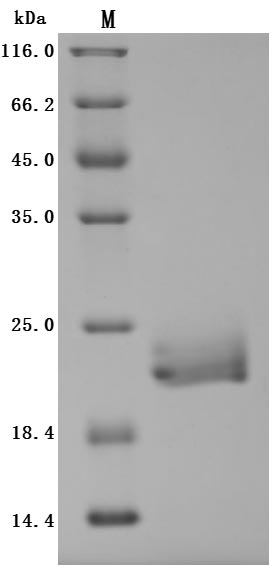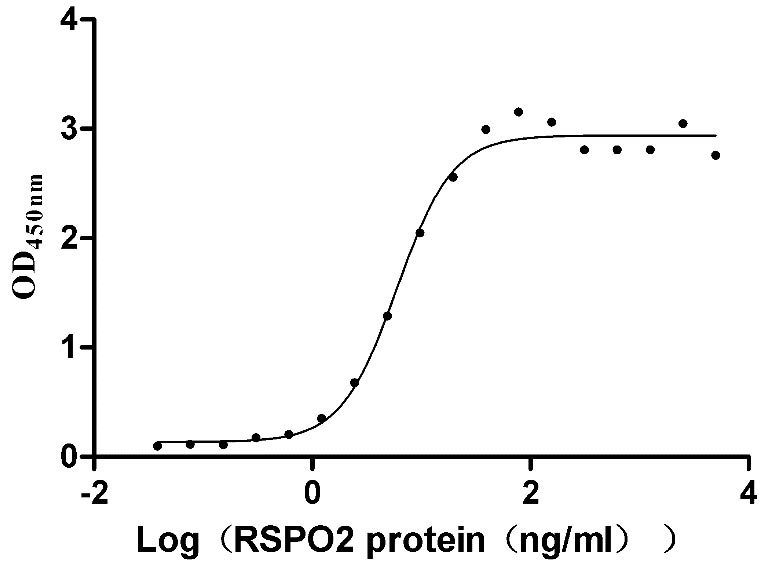The product was expressed with the C-terminal 6xHis-tagged human ZNRF3 gene fragment Lys56-Met219 in mammalian cells. Its purity is greater than 95%. Its activity and endotoxin have been determined.
ZNRF3 is a transmembrane E3 ubiquitin ligase acting as a negative regulator of the Wnt signaling pathway that targets Wnt receptors for ubiquitination and lysosomal degradation. Together with RNF43, ZNRF3 plays an important role in the development and tissue homeostasis by promoting the turnover of LPR6 and Frizzled (FZD). ZNRF3 and RNF43 are essential for embryonic patterning, sex determination, and limb morphogenesis. ZNRF3 is frequently inactivated in human cancers presenting as deletion or mutation to inhibit Wnt signaling. Loss of ZNRF3/RNF43 activity results in extensive cellular proliferation and metaplasia and has been related to EMT in many Wnt-associated malignancies.








